Wednesday, May 14
We had our usual breakfast, and again, we were the only ones at the chateau. Then back to get our jackets and drive off to our next destination, Saint Emilion. This medieval town of almost 1700 residents, completely built into the limestone hill, bounces to over 1,000,000 people each summer with tourists. It also has an archbishop’s palace, fortifications, winding streets, and offers gastronomic wine shops and restaurants. It sits at the center of a crossroads surrounded by several wine appellations and eight hundred properties. The entire town is protected under UNESCO, as its history is thought to have begun in 35,000 BCE, and has evidence of ancient Roman architecture.
We had tickets to see the hermitage, the church, and the catacombs at 11:00. We got there in plenty of time, as the instructions said to meet in front of the church a half hour before the tour began. We had signed up for the English tour, but at the appointed time, only a French tour was being greeted. Fortunately, Vere was able to translate what I could not understand during the tour. Then, half-way through the tour, an English tour group came up behind us, obviously a half hour behind in their timing.
The large church, Eglise Monolithe de Saint-Emilion, is called this because it was carved from one stone (mono- but really the stone is the whole of the hillside).
The story of how the town and church got the name is this: a Breton monk named Emilion came there to retreat from life in the 8th century. He shut himself up in a cave at the foot of the hillside that formed his shelter. He carved out a place to pray, with a bed, a seat, a table, and there was a spring from which he got his water. He became renown for helping the sick, as he would dab his fingers in the water and touch their foreheads, causing miraculous healings.
An amusing anecdote the guide told us was that the present owners of the cave thought that there should be a statue of St. Emilion on the site, but all they could find was one of Saint Francis. So, they simply put the name of St. Emilion on the base of the statue. It is said that if a woman sits on the seat he carved for prayer, that she would become pregnant. It was funny when the guide asked if any woman present wanted to sit on the seat to become pregnant, and every woman shook their heads with a defiant no, as all were way past child-bearing years.
Above the hermit’s cave was a small place of prayer called the Chapel of the Trinity, where a figure holds up a thumb and two fingers, referring to the Holy Trinity. There were also stone tombs in the church, but they didn’t relate to anything there. The church, next to the tiny hermitage and chapel, was also carved out from the hillside in the 11th century, and includes extensive underground catacombs. It is to this day the largest underground church in all of Europe. Emilion was made a saint because of his healing miracles, and in the 15th century, the church was given his name, and then the town, to venerate him. The church has a very high ceiling, a nave, two side aisles, six bays, a choir, bas-reliefs under the vault, and huge pillars that hold up the hillside above it.
Over the centuries water has trickled down through the limestone and formed cracks where tree roots took advantage seeking water, and water from the spring has risen, so the limestone has become too soft to support the ceiling. Due to this extra moisture, recent preservers had to place steel supports around the four central pillars in 2021 to keep the ceiling from collapsing. The entire huge space was dark and damp. As we walked around, in some places an echo was heard from the guide speaking and the tourists whispering their comments, which gave the deep underground space a peculiar and timeless atmosphere.
The tour took about an hour, and opened out onto a sunny square where multiple restaurants were ready for the tourists. We took a seat at a shaded table for an early lunch. Vere had a burger and fries, and I had a Caesar salad with sun-dried tomatoes and egg slices. It also had cold deep-friend chicken pieces, which were horrible, so I set them aside, but the rest of the salad was good. Then we had to climb back up a very steep and slippery stone path to get back to the upper part of the town where our car was parked.
Since we had some time, we went into the other large church in the town, the Saint-Emilion Collegiate Church, so called because the religious community that lived there between the 12th to 18th centuries was a college of Canons that followed the teachings of Saint Augustine. We weren’t there for the church, but for the cloister.
The square stone walkway surrounded a grassy central area and the walls of the cloister were decorated with age-old symbols and contemporary renditions of the garden of Eden. Across one wall was a wooden sideboard that covered the entire length of one aisle. It was an artist’s modern collage of many religious ideas, but it had its strangeness as well. Pointed swords came out of mouths, op-angled portrayals of biblical stories, with mythical creatures, the whore of Babylon, the devil, angels and— well, the rest defied description.
On the way back to the car we stopped for an ice cream. Vere had the salted caramel, and I had leechee fruit sorbet. From there we left town and headed an hour away to the Chateau de Roquetaillade so we could join their 3:00 p.m. tour.
About an hour later, we arrived at the castle, located in Gascony. A large wooden gate blocked the long driveway in front of the property. We had to wait about ten minutes, but then a person opened the gate and we parked just to the right inside. We walked up the gravel road beside the long grassy frontage to the castle. There are two castles on the property, the old to the right and the new stood stately straight ahead. The old castle dates back to the 14th century and the new castle was converted into a pleasure castle first in the 16th and then updated again in the 19th century. The property is one of the rare ones that is still inhabited by the same family since its origins. It first opened to the public in 1956, and the owners still live in a wing of the chateau.
The name Roquentallade means “carved in the rock,” as natural caves and a rocky peak lie beneath the hill. Charlemagne first built a wooden fort at the end of the 8th century on the property where the old castle sits. Then the military building became more complex, changing into a stone fortress. Towers, barbicans, and ramparts were added. The last known update to the old castle was in 1305 with an enlargement of a gate tower. There was a village called Roquetaillade, and it existed for a while, but by 1453, it had disappeared along with the need for a nearby military post.
The nephew of Pope Clement V, Gaillard de La Motte, built the new castle, with a Saint Michael chapel from the 12th century toward the back of the property. The Motte coat of arms originally depicted money with an eagle, then it became two swans.
The new castle was built in 1306 with English influences. The second castle was needed because the old one did not have a well, only a cistern which proved insufficient. The new castle had six towers, a central keep and lots of innovations. With the end of the Wars of Religion in 1598, peace returned and renovations continued. In place of arrow slits, large windows were added, and two Renaissance fireplaces. In 1850, architects restored the battlements, repaired the keep, and modified the roofs of the round towers. Then Viollet-le-Duc, the famous architect, was called to make more upgrades, and it proved to be his last example of restoring, decorating, furnishing and organizing a castle. His style became the Beaux-Arts that Gaudi, Horta and Guimard copied.
Our guide met us at the gate and we walked toward the old castle, where she gave an annotated description of its history. Then we completely encircled the property, first seeing inside the old chapel, which is still under renovation. All the beautiful walls, altar and ceiling were having their frescoes touched up and repainted. The center of the ceiling, in particular, was amazing. Eight octagonal floral inserts lined up toward the altar. Each one was actually concave with gold, light blue petals and an iridescent white inside, which made them shine and glow. The chapel beams were of red, orange, light blue, and gold, producing an absolutely beautiful and intricate Orientalism about them. In our guide’s continuation around the castle, she spoke of the improvements over the years. That part of the tour took half an hour.
Then we went to the drawbridge and entered into the castle forecourt. The front of the castle showed a grand Gothic arch with stone swans on either side, and further up the coat of arms, with gargoyles looking down at us. There was also a head, in stone, of Violet le Duc on the left and the empress Eugenie, wife of Napoleon, on the right. Below, the well was to the left, but sealed. Then we entered and stood before steps that led down to a lower level, and to our right, a grand staircase took us up to the next level. The pillars had carved vine leaves and along the top floor was a trough with gold spigots for guests to wash their hands before dining. Decorating the fountain was a merman and a basilisk, following a fox and wild boar. Then a bat up on the upper left signified the construction of a gothic vault, and a monkey eating an apple up on the right symbolized satisfaction. At the top was an eagle and a griffin, representing the skies and eternity.
On this floor were three rooms decorated in a 16th century style, with chimneys, furniture, portraits and beautiful objects of the time. The Grand Hall was richly decorated with Pyrenean marbles and decorative stucco. Four female statues represented the cardinal virtues: prudence, courage, justice and temperance. In the salon there was a painting of Hercules on one of his labors, the killing of the Lemaean Hydra, a series of water colors, Louis the 13th armchairs, and around the chimney, cornucopias and military arms.
On one table the guide picked up a heavy 14th century helmet with two metal visors that could be opened for seeing and eating, or closed for fighting. When an officer came by, they were required to open their visor, which meant that they had to raise their arm with extended fingers to do so. This is the origin of the military salute. In the Cardinal’s room, his portrait was on the wall next to his bed, and a hidden secret doorway was close by. The bed is centrally placed against the far wall, being high and having a box four-poster bed covered in red silk and gold, with a travel trunk at its base.
Then we descended to the ground floor and the dining room. The wall coverings were blue, so guests would feel they were seeing outdoors. Decorative floor tiles were laid out like a carpet. The dining chairs had wheels on one side so they could be turned and the gentlemen could straddle the chair backward to smoke and sip Armagnac. If they wanted to take a stroll, a side door and narrow drawbridge came down so they could come and go directly from the dining room to the gardens. Next to it was the pink room, which was for guests, with two beds. It had a toilet and above the door was printed “Vale, Vale, Vale”, which meant “go well, go well, go well,” wishing guests to have a good bowel movement. One painting showed a man looking at a bed and a lady closing her eyes and looking down. An obvious suggestive place for some sport.
Last, on the lowest level was the kitchen, with the stove centered in the middle of the room. At one end was the hot fire, in the center a medium place for soups and sauces, and the far side to keep things warm. Apparently the family who still lives there uses the kitchen every day. Every wall was covered with shiny copper pots and pans, vegetable and dessert molds, baking pans, bed pans, and funnels. Even an ice cream maker was there, and of course, a large barrel of wine.
That was the end of our tour, which took another forty minutes. Then we headed back to Chateau Camperos. We rested for almost two hours, and then we decided to go back to Au Bureau, the diner, and order something different. Vere had fish and chips and I had the mac and cheese with sautéed onions. We returned to the chateau and did a bit of writing.
For our last night at the B&B, at 10:00 p.m. we went to the hot tub at the far end of the lawn to enjoy a good soak. The host heard the back door and came out to remove the hot tub cover, turn on the pool lights and bring us some large towels. We thoroughly enjoyed our soak in the tub, which happened to be the same make as ours. We were in the tub for a good hour, listening to the pool sweeper go around the base and sides of the adjacent pool, and then flip up and spray water like a serpent. While relaxing, we heard the rain return and hit the roof that covered the pool and hot tub high above our heads. Finally we got out, and just as we were robed and ready to head back to the chateau, the thunder and lightning increased and the rain came down really hard. So we sat there for about ten more minutes enjoying the onslaught under comfortable protection. Then we returned to our room for our last night. It was great way to end our stay at Chateau Camperos.
Thursday, May 15
After breakfast, we went back to our room, packed up our belongings, and carefully loaded the car, especially our two bottles of Sauternes from Chateau d’Arche. We thanked Benoit sincerely for a wonderful stay and said our goodbyes. We didn’t go far, to a local laundromat to wash a few clothes, and back to the grocer for a few things for our drive, for now we were on to the next leg of our trip, to the Dordogne region.
The next installment of this travelog (the Dordogne region) will continue soon. Stay tuned!

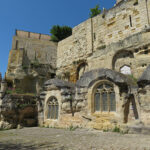
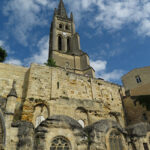
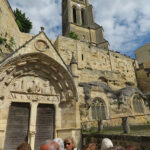
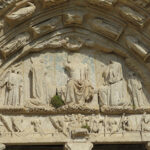
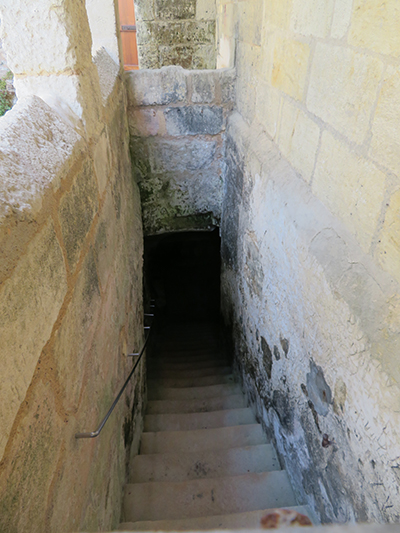
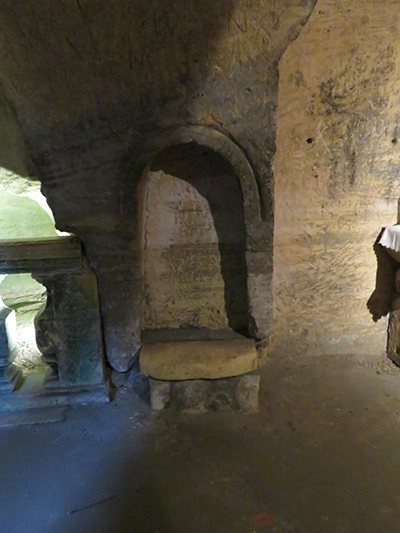
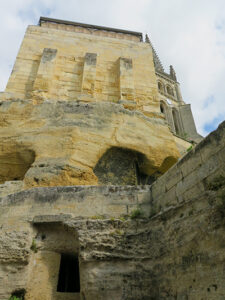


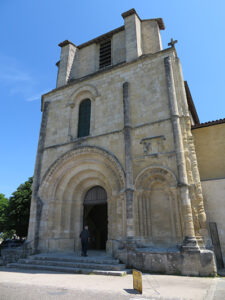
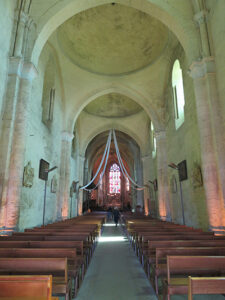
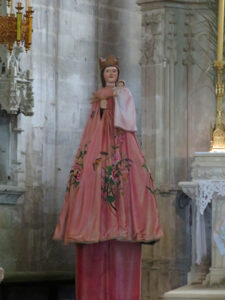

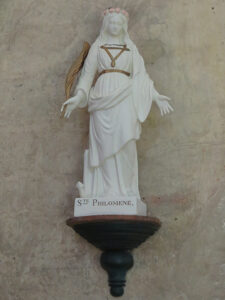
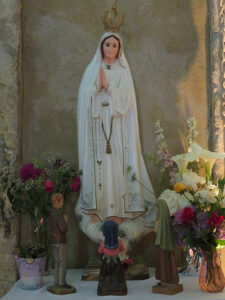
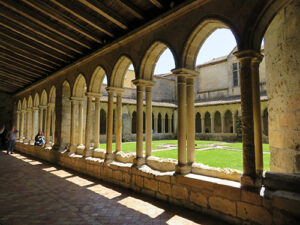
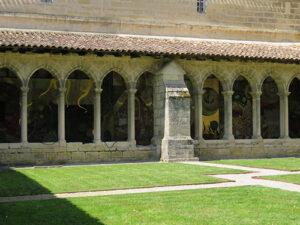

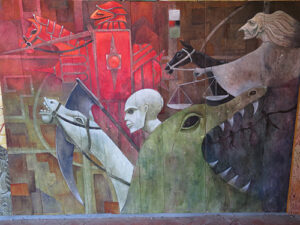
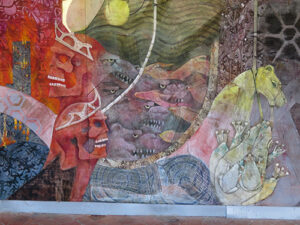

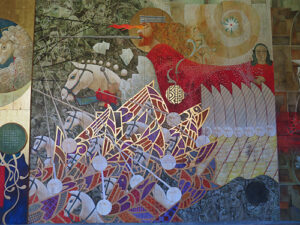
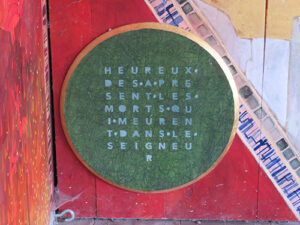
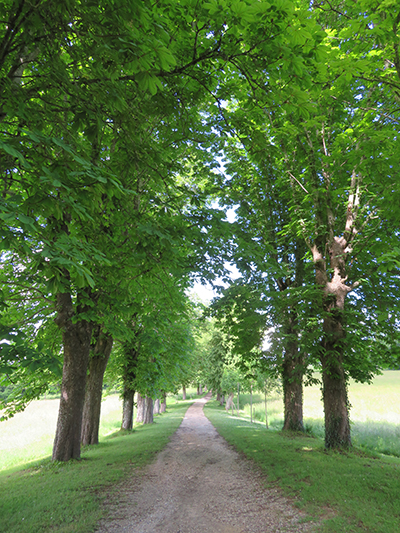
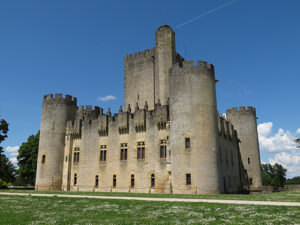
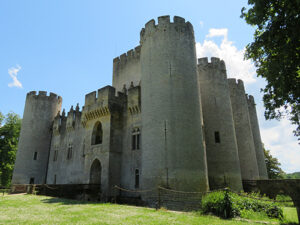

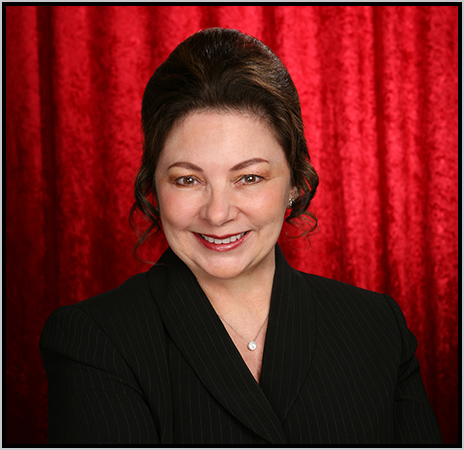 The official website of Lita-Luise Chappell, writer on sex, magic, food, distant lands, and everyday life with articles, poetry, novels, travelogues, rituals, cookbooks, and short-stories.
The official website of Lita-Luise Chappell, writer on sex, magic, food, distant lands, and everyday life with articles, poetry, novels, travelogues, rituals, cookbooks, and short-stories.
